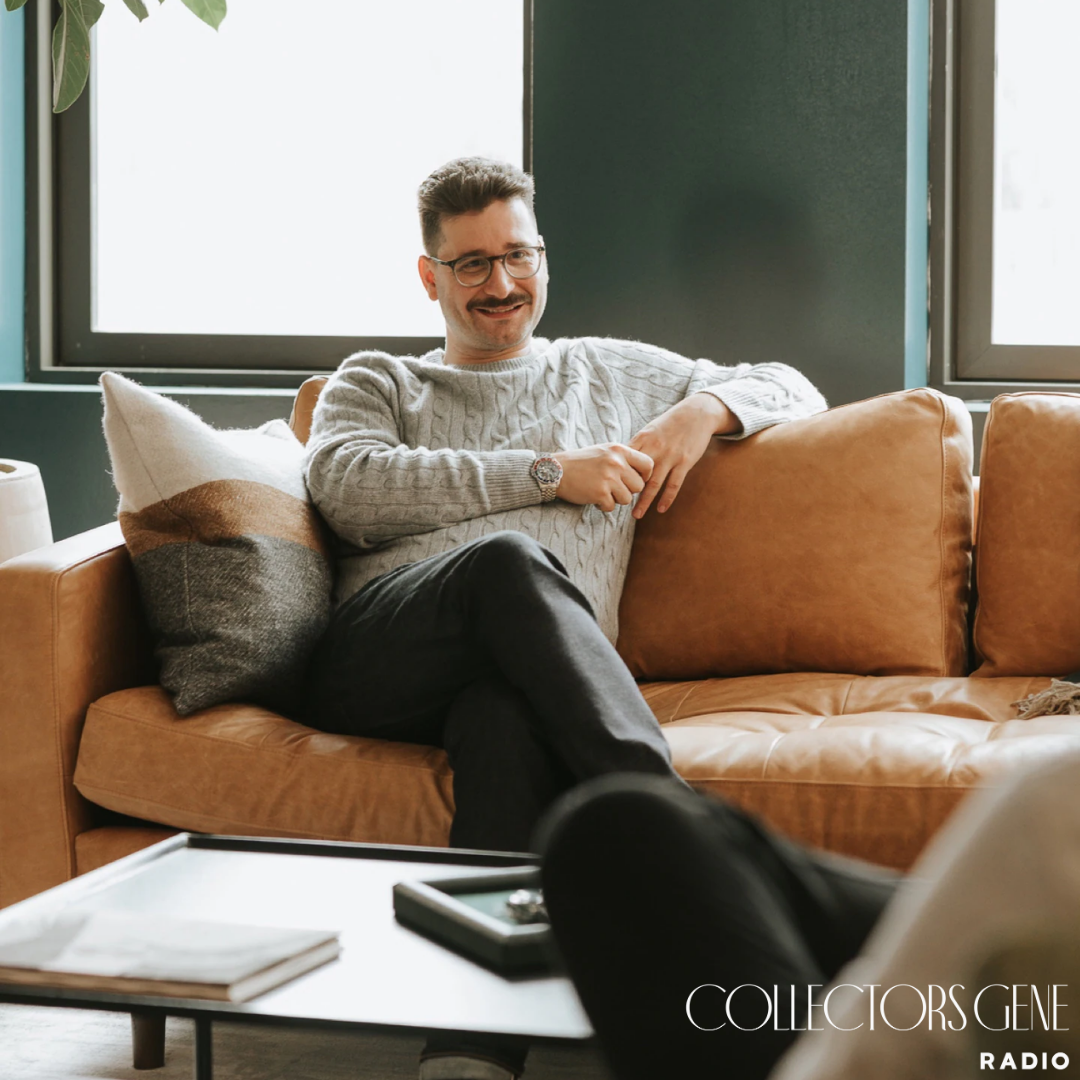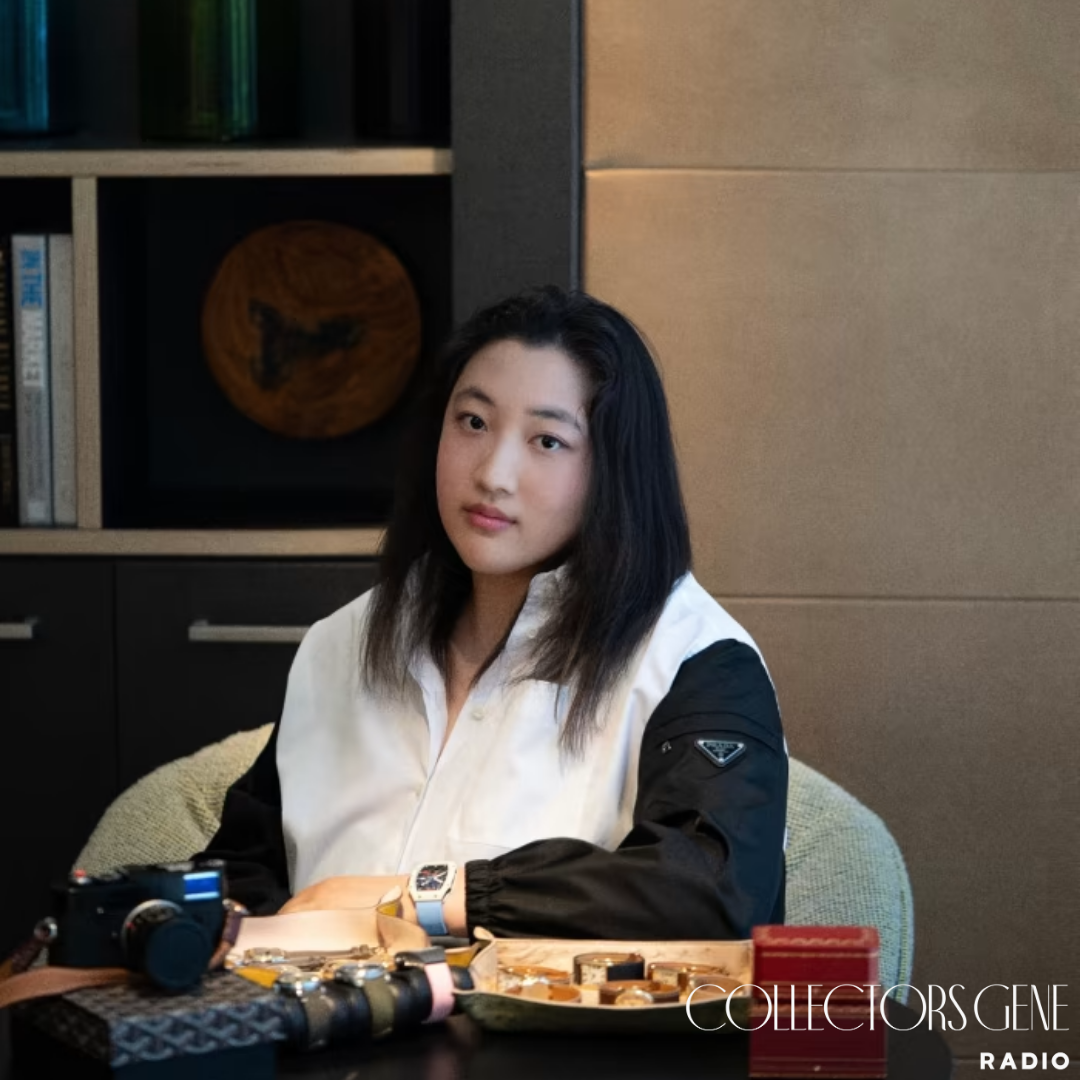When you first step into the Aman Venice, the atmosphere is immediate. The layers of history, the weight of legacy, and the way every object seems to hum with stories. That sense of living in a place where every corner, every painting, every tapestry has already seen centuries of life was precisely the world Count Giberto grew up in. Sitting down with him, it’s impossible not to get swept up by the perspective of someone who has lived surrounded by artistry, refinement, and history, not as a visitor, but as a resident who has internalized it all.
I’ve spent a lot of time talking to collectors of watches, cars, and jewelry, but few have had the sort of upbringing that blends aristocratic heritage with a tactile, deeply personal appreciation for objects. Count Giberto’s perspective isn’t just about ownership, it’s about understanding why something matters, how it was made, and what it communicates across generations.
Early Exposure to Art, Antiques, and Aristocracy
Giberto grew up in a Venetian palazzo filled with centuries-old art, tapestries, and furniture. Antique shops were his playground, and he recalls wandering through them imagining past lives of the objects he encountered. That experience shaped not only his taste but also his instinct as a collector. He learned early on to recognize quality and rarity almost intuitively.
Many of the pieces in his home weren’t “collections” in the modern sense, they were simply things his family valued and preserved. From silver cups to woven tapestries, each item had been curated over generations. Some had links to the Barberini family, others traced back to his great-grandfather Nicolò Papadopoli Aldobrandini, whose coin collection, now part of the Museo Correr, is still considered one of the most significant private donations in Italy.
His family rarely spoke about money. Value wasn’t measured in price tags; it was measured in craftsmanship, rarity, and provenance. That lens, focusing on the story and skill rather than cost, still defines how Giberto looks at objects today.
The Art of Craft and Technical Mastery
When our conversation turned to making things, his passion became clear. He creates pieces inspired by historical works, drawing on techniques from the 17th through 19th centuries. Rock crystal, agate, aventurina glass, materials with long histories, become modern interpretations of Fabergé or Lalique-like forms.
These aren’t reproductions. They are homages that respect the technical difficulty and artistry of the originals. He described one bust made using the lost-wax technique, rendered in amber-colored aventurina with flecks of gold. It took nearly a month to complete, if everything went well. The process is fragile, exacting, and prohibitively expensive to replicate today yet he pursues it anyway.
Listening to him, I thought of past guests who’ve spoken about the invisible hours behind an object, whether restoring a watch piece by piece or bringing a fragile textile back to life. Giberto’s point was simple: without understanding the craft, you’re only skimming the surface of what makes something worth collecting.
Watches as Wearable Art
Like many of us, Giberto’s love of watches is equal parts passion and respect for craft. His collection is modest in size, around a dozen to fifteen pieces, but each one has been chosen with intent.
His favorites are vintage Rolex models, particularly GMT-Masters. One of his treasures is a GMT from the 1980s with a black and faded gray bezel, which he calls his best. The fading, the wear, the patina, these aren’t flaws. They’re the very things that turn a watch into a living document of time.
He also spoke at length about Parmigiani Fleurier, recalling a visit to their archives where he handled 18th-century pocket watches made for Chinese clients. Dual mechanisms, ruby inlays, astronomical complications displayed a level of artistry that was staggering. He noted how, in that context, even the decision to make two identical pieces carried meaning: buying one alone was considered unlucky. Objects like that don’t just tell the story of craft; they tell the story of culture.
For him, the hunt always comes first. That thrill of searching, of chasing down something rare, outweighs the satisfaction of having it in a box. But when he straps on his faded GMT, it’s obvious that ownership can carry deep meaning too.
Family Collections and Lost Treasures
Giberto’s family history is filled with collections. Coins, tapestries, sculpture, many now scattered, some preserved. During the difficult economic climate of 1970s Italy, entire holdings were sold. Clearing the palazzo, he once stumbled across suitcases filled with old costumes, even cooks’ uniforms, reminders of daily life from another era.
Those discoveries highlight the transient nature of collections. No matter how rare or valuable, objects pass through hands, sometimes lost, sometimes rediscovered. For Giberto, that impermanence is part of the story. Collecting, in his eyes, isn’t about hoarding permanence, it’s about tending to history, however briefly, before passing it along.
The Collectors Gene Rundown
The One That Got Away: He didn’t elaborate in detail, but it was clear there are pieces that still linger in his mind, objects missed at the moment that continue to shape how he approaches collecting today.
The On Deck Circle: Books are pulling at him lately, though he also joked about the allure of a Lamborghini Miura from the ’70s. For him, it’s the chase more than the ownership that drives the excitement.
The Unobtainable: A Rembrandt. Price, rarity, and museum holdings put it out of reach, but longing is part of collecting. Some things are meant to inspire rather than to own.
The Page One Re-Write: If he could start again, he’d immerse himself in Japanese Imari porcelain or 16th- and 17th-century European pottery. Both are fields rich in beauty and narrative.
The GOAT: Ralph Lauren. Not just for his cars, but for the restraint and curation behind the collection. Taste is as much about what you leave out as what you acquire.
The Hunt or The Ownership: The hunt wins every time, the moment of discovery, of research, of negotiation. That’s what defines the experience.
Do You Feel That You Were Born With The Collector’s Gene?: For Giberto, collecting is less about objects than about mindset. It’s curiosity, judgment, and the desire to preserve and engage with history.
Closing Thoughts
Count Giberto embodies the idea that collecting is more than acquisition. Growing up in a Venetian palazzo surrounded by history taught him that objects carry stories, and those stories only reveal themselves if you take the time to look. Whether it’s a rock crystal bust, a faded Rolex bezel, or a suitcase of forgotten costumes, the value lies in context and craft.
Talking with him reminded me how interconnected these conversations have become across episodes. Some collectors obsess over precision, others over rarity; Giberto’s obsession is with continuity, the threads that tie objects, families, and centuries together. It’s a perspective that feels timeless, much like the walls of the Aman Venice themselves.





